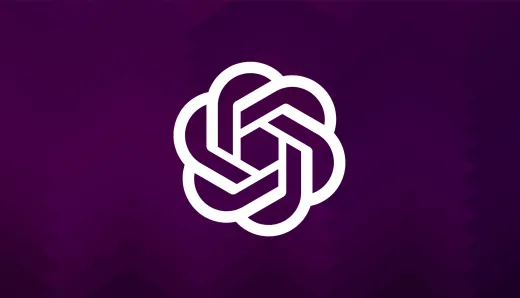OpenAI Unveils Groundbreaking GPT-4o Model: A New Era for AI

OpenAI introduced GPT-4o, the latest iteration of its large language model, during a live-streamed event led by Chief Technology Officer Mira Murati. This new model is set to revolutionize the way we interact with AI, making ChatGPT smarter, more versatile, and easier to use than ever before.
A Giant Leap Forward
GPT-4o brings a new era of AI with its ability to engage in real-time spoken conversations and multimodal interaction. Enhanced memory and real-time translation make interactions more personalized and seamless while prioritizing user-friendly and natural interaction.
- From Text to Multimodal Interaction: The GPT-4o model represents a significant upgrade from its predecessor, GPT-4, launched just over a year ago. One of the standout features of GPT-4o is its ability to engage in real-time spoken conversations. This turns ChatGPT into a digital personal assistant capable of interacting through text, voice, and even vision. Users can upload screenshots, photos, documents, or charts, and ChatGPT will converse about them seamlessly.
- Enhanced Memory and Real-Time Translation: Another groundbreaking feature is the model's memory capability. GPT-4o can now learn from previous conversations with users, making interactions more personalized and relevant. Additionally, it supports real-time translation, further breaking down language barriers with support for over 50 languages.
- User-Friendly and Natural Interaction: "This is the first time that we are making a huge step forward when it comes to the ease of use," said Mira Murati during the live demo at OpenAI’s San Francisco headquarters. "This interaction becomes much more natural and far easier."
ChatGPT-4o vs Gemini 1.5 Pro: A Battle of AI Titans
The AI world is buzzing with excitement as OpenAI and Google vie for supremacy in the rapidly evolving landscape of artificial intelligence. Just hours before Google’s highly anticipated I/O developer conference, OpenAI stole the spotlight by unveiling GPT-4o, its latest AI model. This strategic move by OpenAI's CEO, Sam Altman, was no coincidence and added a layer of drama to the AI arms race. In this section, we delve into a detailed comparison between OpenAI's GPT-4o and Google's newly announced Gemini 1.5 Pro, examining their features, capabilities, and potential impact on the AI industry.
GPT-4o: The Omni Model
OpenAI's GPT-4o, where "o" stands for Omni, integrates text, vision, and audio into a single cohesive model. This multimodal capability allows GPT-4o to engage in natural, human-like conversations, process visual inputs, and even recognize and respond to emotions. Some of the key features include:
- Real-Time Spoken Conversations: GPT-4o can interact in real-time with spoken language, making it feel like conversing with a human.
- Visual and Audio Integration: It can analyze images, videos, and audio clips, providing comprehensive insights and responses.
- Memory Capabilities: GPT-4o can remember previous interactions, enabling more personalized and contextually aware conversations.
- Multilingual Support: The model supports real-time translation across over 50 languages, enhancing its utility in global communication.
Gemini 1.5 Pro: Google's Next Leap
At the Google I/O conference, Sundar Pichai introduced Gemini 1.5 Pro, Google’s response to GPT-4o. This model boasts impressive features designed to push the boundaries of what AI can achieve:
- 2 Million Token Context Window: Gemini 1.5 Pro can handle extensive contexts, equivalent to 2 hours of video or 60,000 lines of code, making it ideal for large-scale data analysis.
- Context Caching: To manage the high cost of tokens, Gemini 1.5 Pro introduces context caching, which allows the reuse of tokens at a fraction of the cost.
- Project Astro: Demonstrated as a part of Google’s AI showcase, Project Astro enhances the model's ability to understand and interact with visual inputs, though it still exhibits some latency and a more robotic voice compared to GPT-4o.
- Developer Integration: Google launched tools like Firebase Gen Kit and Project IDX to facilitate AI-enabled application development, aiming to attract developers and integrate AI more seamlessly into everyday applications.
Head-to-Head Comparison
Exploring a detailed comparison between GPT-4o and Gemini 1.5 Pro, highlighting their key features and capabilities:
Conversational Abilities
- GPT-4o: Offers a more natural and expressive conversation experience, with varied tones from dramatic to super chill, suitable for diverse applications from storytelling to professional advice.
- Gemini 1.5 Pro: While capable, it lags slightly in conversational fluidity and expressiveness, with a more robotic tone noted in demonstrations.
Visual and Multimodal Integration
- GPT-4o: Seamlessly integrates text, vision, and audio, allowing for a comprehensive multimodal interaction.
- Gemini 1.5 Pro: Also supports multimodal inputs but with noted latency and less natural interaction compared to GPT-4o.
Developer Ecosystem
- GPT-4o: Emphasizes accessibility, allowing developers to build custom chatbots and applications via the GPT Store, now available to non-paying users.
- Gemini 1.5 Pro: Focuses on robust developer tools like Firebase Gen Kit and Project IDX, enhancing the development process with integrated AI capabilities.
Staying Ahead in the AI Race
OpenAI faces stiff competition from tech giants like Google and Meta, both advancing their AI models. Microsoft's strategic partnership further bolsters OpenAI's position, promising enhanced capabilities and market competitiveness.
- Competing with Tech Giants
OpenAI’s latest release comes amid fierce competition from other tech giants like Google and Meta. Both companies are advancing their AI models, with Google expected to announce updates to its Gemini AI model at its annual I/O developer conference. Like GPT-4o, Google’s Gemini is also multimodal, capable of interpreting and generating text, images, and audio. This competition underscores the rapid pace of innovation in the AI field. - Benefiting Strategic Partnerships
Microsoft, a significant investor in OpenAI, stands to gain substantially from these advancements. With billions of dollars invested, Microsoft is integrating OpenAI’s technology into its products, enhancing its capabilities and market competitiveness.
Demonstrations of GPT-4o's Capabilities
OpenAI showcased GPT-4o's versatility during live demos. From real-time problem-solving to emotional intelligence, GPT-4o impressed with its natural interactions and multilingual support:
- Real-Time Problem Solving and Storytelling
During the live demonstration, OpenAI executives showcased various applications of GPT-4o. ChatGPT engaged in real-time problem-solving, offered coding advice, and even told bedtime stories with a natural, human-like voice. It could also analyze an image of a chart and provide insightful commentary. - Emotional Intelligence and Multilingual Support
In one fascinating example, GPT-4o detected the user's emotions through their breathing patterns, offering calming advice. It humorously reassured a staff member by saying, “You’re not a vacuum cleaner!” in a voice strikingly similar to the Scarlett Johansson-voiced AI from the film “Her”. Moreover, it demonstrated seamless multilingual conversation capabilities, automatically translating and responding in multiple languages.
Looking Ahead: Desktop App and Developer Opportunities
OpenAI is expanding accessibility with a new ChatGPT desktop app and developer opportunities. With GPT-4o's rollout, both free and paid users will benefit from enhanced features, aiming to broaden ChatGPT's user base and improve user experience.
- Expanded Accessibility
To further enhance accessibility, OpenAI will launch a ChatGPT desktop app featuring GPT-4o capabilities. This development provides users with another platform to interact with OpenAI’s advanced technology. Furthermore, GPT-4o will be available to developers aiming to create custom chatbots via OpenAI’s GPT store, a feature now extended to non-paying users. - Rollout and Usage
The new features will roll out to ChatGPT users in the coming months. Free users will have a limited number of interactions with GPT-4o before reverting to the older GPT-3.5 model, while paid users will enjoy extended access to the latest technology. OpenAI’s move aims to broaden the user base beyond the current 100 million active users by offering an enhanced ChatGPT experience.
GPT-4o: A Catalyst for Improved Smartphone Assistants
OpenAI's GPT-4o elevates smartphone assistants with its advanced AI capabilities, bridging the gap in AI performance. With the ability to process audio, video, and images, GPT-4o transforms smartphone interactions, paving the way for more sophisticated AI applications in consumer products.
Bridging the AI Capability Gap:
The introduction of GPT-4o raises the bar for smartphone assistants, which have long lagged in terms of AI capabilities. OpenAI’s new model can understand and generate audio, video, and still images, making it a versatile tool for various applications, including live translation and context-aware conversations.
Industry Implications:
As GPT-4o brings us closer to a science fiction-like AI assistant, its impact on the industry is profound. OpenAI’s CEO Sam Altman expressed optimism, stating that the new voice and video modes represent the best computer interface he has ever used. This technology not only enhances user interaction but also sets the stage for more advanced AI applications in consumer products.
Collaboration and Integration:
Apple, recognizing the potential of GPT-4o, has reportedly been in talks with OpenAI to integrate its technology into future iPhone and iOS releases. While a complete replacement of Siri with ChatGPT is unlikely, the collaboration could significantly enhance Apple’s AI capabilities, making everyday interactions more efficient and intuitive.
Conclusion: A New Dawn for AI
OpenAI’s GPT-4o marks a pivotal moment in the evolution of AI technology. Its advanced features, including real-time spoken conversations, memory capabilities, and multimodal interactions, set a new standard for AI applications. As competition heats up and collaborations with tech giants like Microsoft and Apple unfold, the future of AI looks more promising than ever. The next few months will undoubtedly be exciting as these innovations roll out, transforming how we interact with technology in our daily lives.




